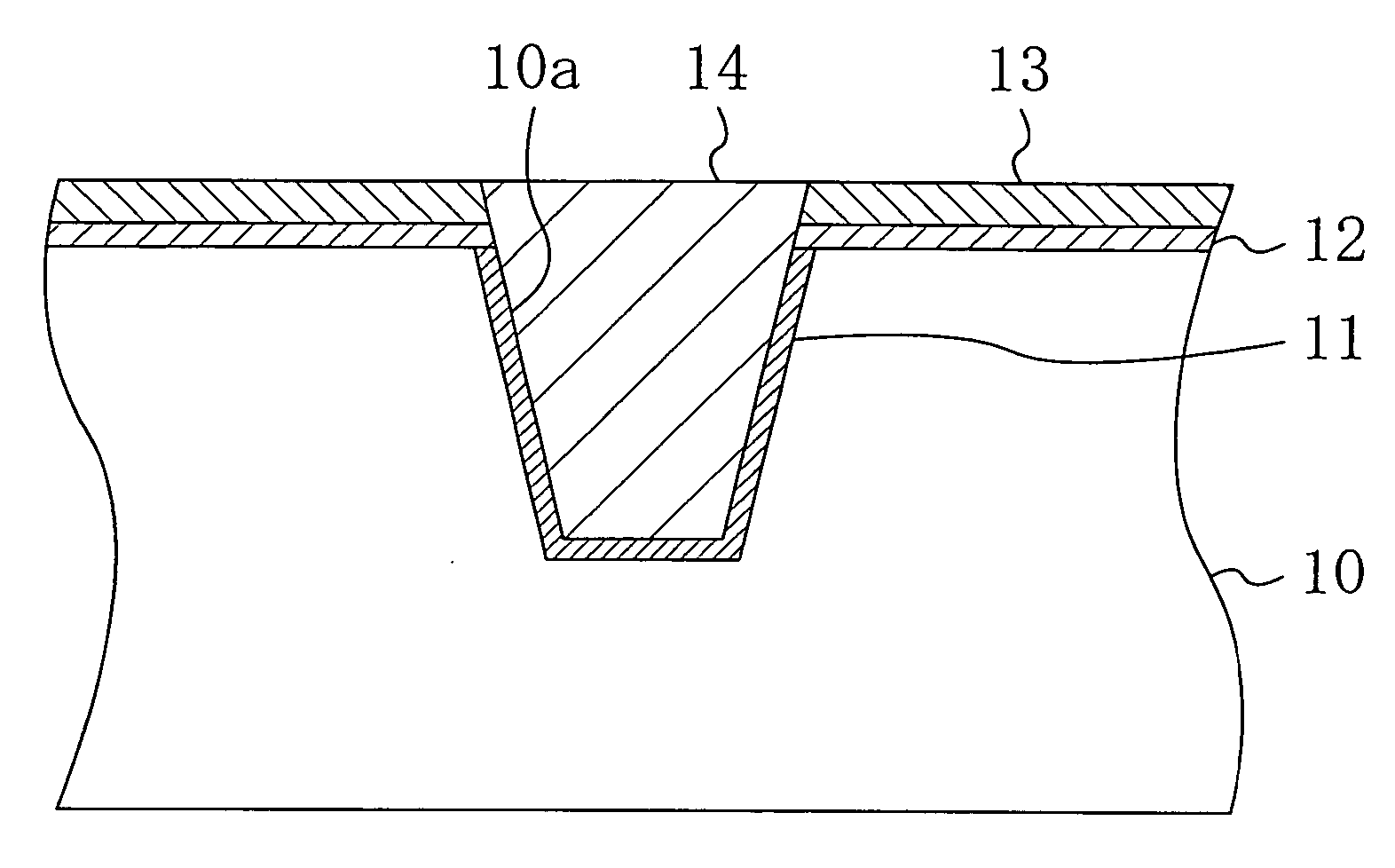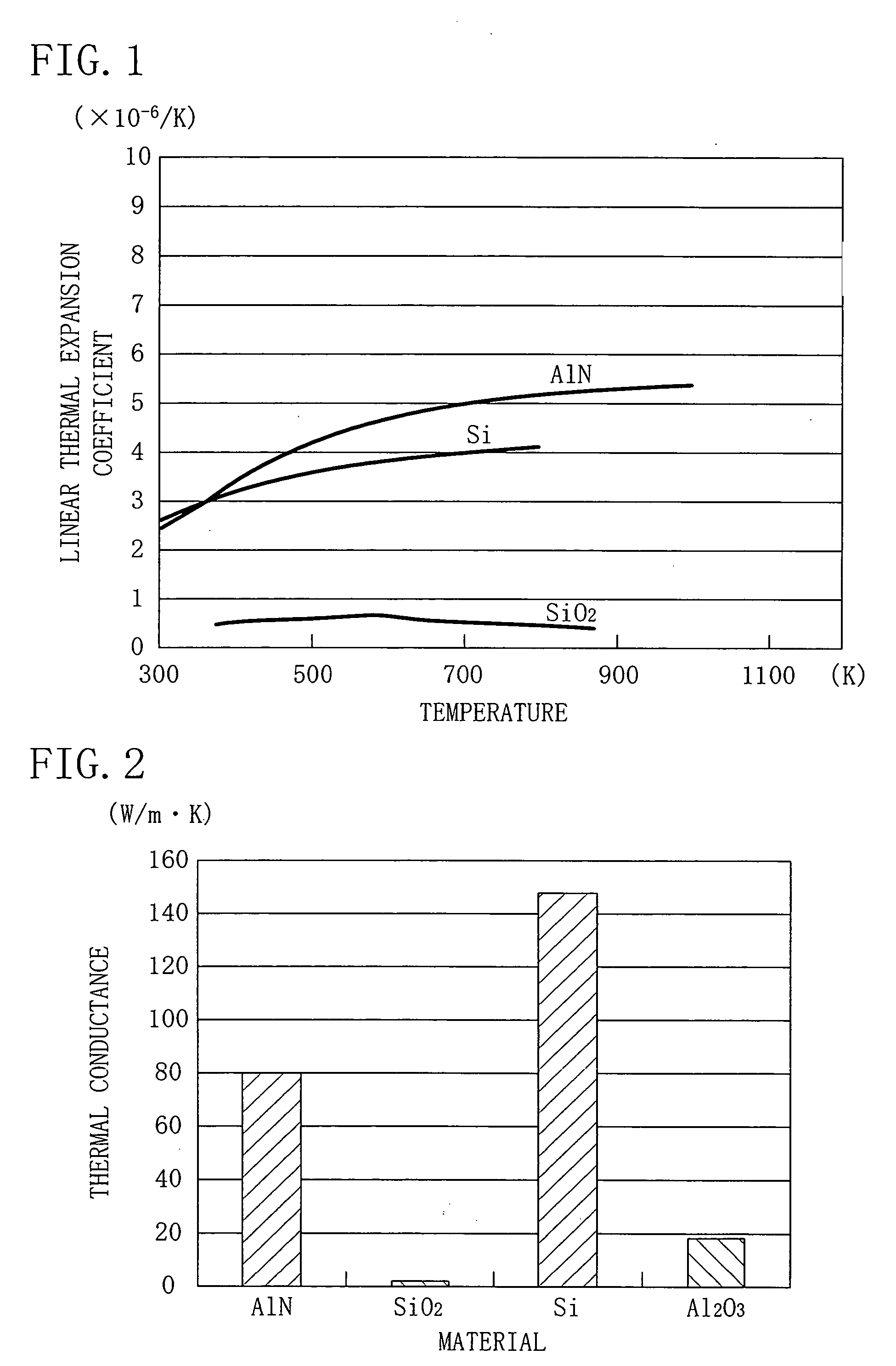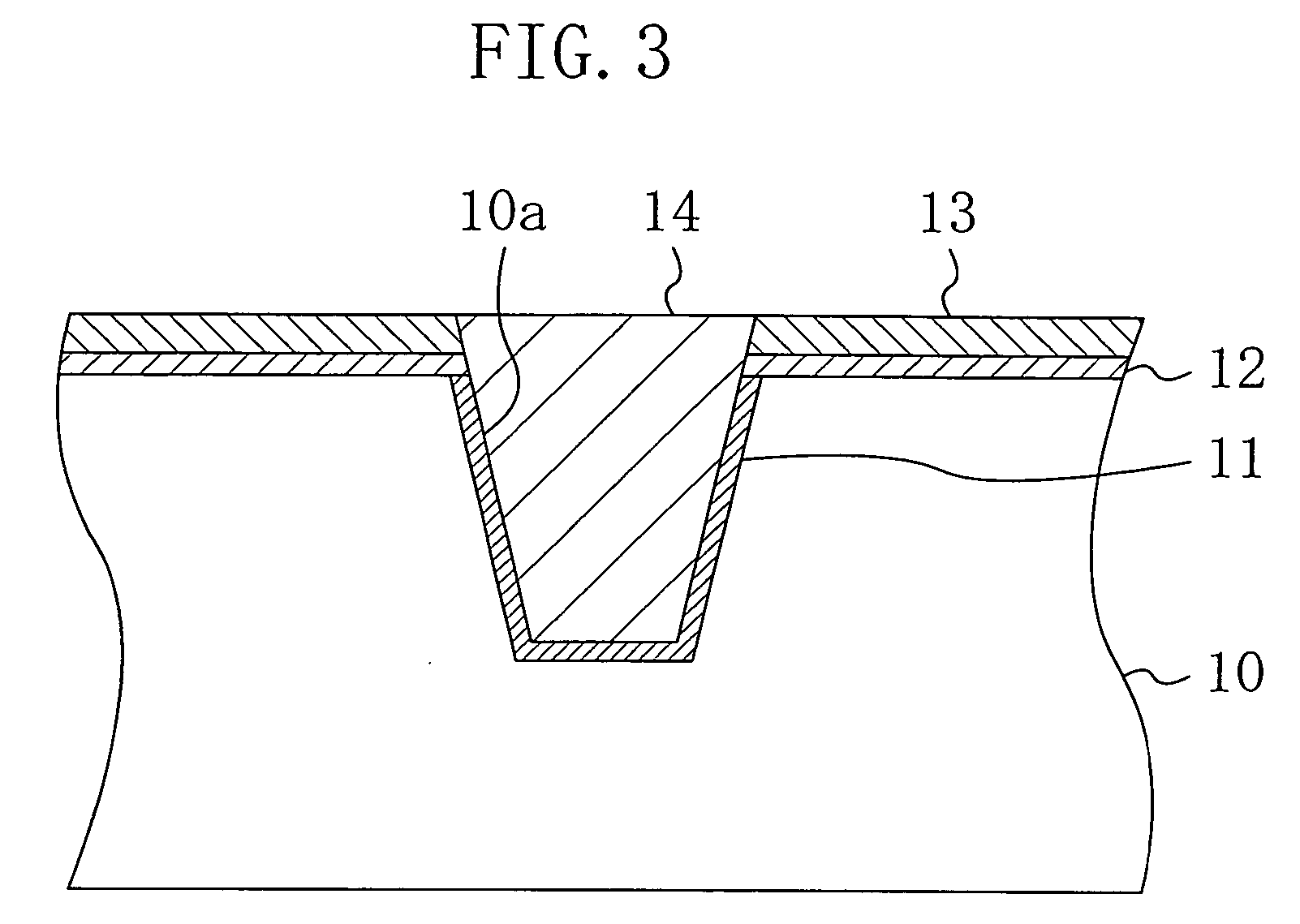Semiconductor device and manufacturing method thereof
a semiconductor and semiconductor technology, applied in the direction of semiconductor devices, basic electric elements, electrical equipment, etc., can solve the problems of reducing the reliability of elements, and achieve the effects of reducing the stress resulting from the trench isolation formed in the semiconductor substrate, reducing the cost of manufacturing, and improving the heat release through the trench isolation region
- Summary
- Abstract
- Description
- Claims
- Application Information
AI Technical Summary
Benefits of technology
Problems solved by technology
Method used
Image
Examples
first embodiment
[0053] Hereinafter, a semiconductor device and a manufacturing method thereof according to a first embodiment of the present invention will be described with reference to the drawings.
[0054]FIG. 3 shows a cross-sectional structure of a trench isolation region (STI) in the semiconductor device of the first embodiment.
[0055] As shown in FIG. 3, a semiconductor substrate 10 of silicon (Si) has a groove (trench) 10a which is 0.25 μm to 0.30 μm deep and 0.20 μm or less wide on top. For example, the trench 10a is filled with aluminum nitride, an insulating metal nitride. An STI 14 of aluminum nitride is thus formed in the upper part of the semiconductor substrate 10. Note that the above dimensions of the trench 10a are shown by way of example only and the dimensions of the trench 10a are not limited to the above values. The semiconductor substrate 10 is not limited to a silicon wafer. The semiconductor substrate 10 may be an SOI (silicon on insulator) substrate having an insulating laye...
second embodiment
[0074] Hereinafter, a semiconductor device and a manufacturing method thereof according to a second embodiment of the present invention will be described with reference to the drawings.
[0075]FIG. 9 shows a cross-sectional structure of a trench isolation region (STI) in the semiconductor device of the second embodiment. In FIG. 9, the same elements as those of FIG. 3 are denoted with the same reference numerals and characters, and description thereof will be omitted.
[0076] As shown in FIG. 9, an adhesive layer 15 of aluminum oxide (Al2O3) is formed between an STI 14 of aluminum nitride (AlN) and a sidewall oxide film 11 which is formed on the bottom and the wall surface of a trench 10a formed in the upper part of a semiconductor substrate 10. The adhesive layer 15 is about 5 nm thick and is formed in order to improve adhesion between the sidewall oxide film 11 and the STI 14.
[0077] The adhesive layer 15 is formed not only on the inner surface of the trench 10a but on the respectiv...
third embodiment
[0083] Hereinafter, a semiconductor device and a manufacturing method thereof according to a third embodiment of the present invention will be described with reference to the drawings.
[0084]FIG. 11 shows a cross-sectional structure of a trench isolation region (STI) in the semiconductor device of the third embodiment. In FIG. 11, the same elements as those of FIG. 3 are denoted with the same reference numerals and characters, and description thereof is omitted.
[0085] As shown in FIG. 11, an STI 14 of the third embodiment has a first filler 16 of aluminum nitride (AlN) and a second filler 17 of silicon oxide (SiO2) as fillers of a trench 10a. The first filler 16 is formed on the bottom and the wall surface of the trench 10a. The remaining portion of the trench 10a is filled with the second filler 17.
[0086] In the third embodiment, the trench 10a formed in the upper part of the semiconductor substrate 10 is not filled only with the first filler 16 of aluminum nitride but with both ...
PUM
| Property | Measurement | Unit |
|---|---|---|
| thermal conductivity | aaaaa | aaaaa |
| thermal conductivity | aaaaa | aaaaa |
| thickness | aaaaa | aaaaa |
Abstract
Description
Claims
Application Information
 Login to View More
Login to View More - R&D
- Intellectual Property
- Life Sciences
- Materials
- Tech Scout
- Unparalleled Data Quality
- Higher Quality Content
- 60% Fewer Hallucinations
Browse by: Latest US Patents, China's latest patents, Technical Efficacy Thesaurus, Application Domain, Technology Topic, Popular Technical Reports.
© 2025 PatSnap. All rights reserved.Legal|Privacy policy|Modern Slavery Act Transparency Statement|Sitemap|About US| Contact US: help@patsnap.com



